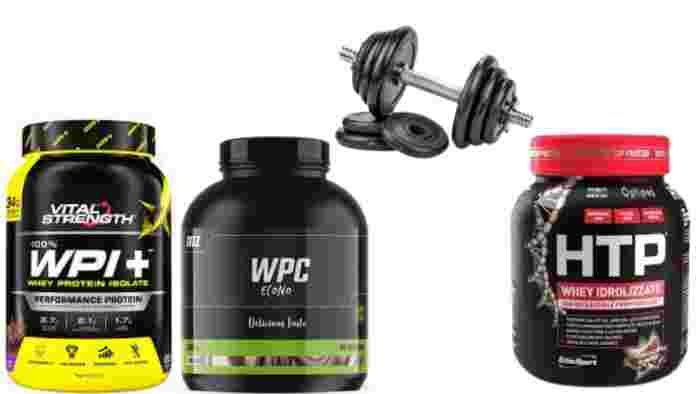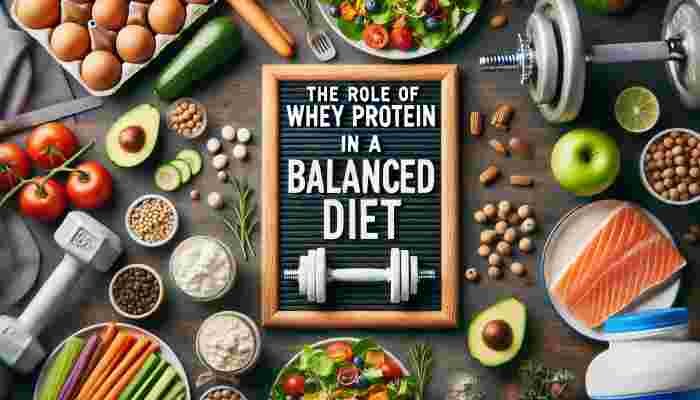What is Whey Protein?
whey protein is a high-quality protein naturally found in milk and cheese, derived during the cheese-making process when liquid separates from the curds. It’s rich in all nine essential amino acids, making it a complete protein that is highly favored in dietary supplements. Whey protein is highly digestible and absorbed quickly compared to other types of protein, making it a staple in the diets of athletes, bodybuilders, and those seeking to improve muscle mass and overall health.
The History of Whey Protein in Nutrition
- Early Disposal: Initially, whey was largely regarded as a waste product in the cheese-making process. This liquid substance was frequently discarded without consideration of its potential benefits, reflecting a limited understanding of its nutritional properties.
- Nutritional Discovery: It wasn’t until the mid-20th century that researchers began to uncover the rich protein content and rapid digestibility of whey. This recognition marked the beginning of a shift in how whey was perceived in the health and nutrition fields.
- Sports Nutrition Boom: In the 1970s and 1980s, whey protein rapidly gained popularity as a dietary supplement, especially among bodybuilders and athletes. Its ability to aid in muscle recovery and growth after strenuous exercise made it a staple in sports nutrition.
- Mainstream Acceptance: Over time, the benefits of whey protein extended beyond the athletic community. Its high efficiency in promoting muscle synthesis and overall health benefits led to its recommendation as a valuable protein source for the general public, contributing to its widespread use today in various forms and products.
Key Takeaways:
- Whey Protein Varieties: Understanding the differences between concentrate, isolate, and hydrolysate can help you choose the right type for your needs.
- Health Benefits: From muscle repair and growth to weight management, whey protein offers a variety of health benefits.
- Usage Tips: Timing and pairing whey protein with a balanced diet enhances its benefits.
- Choosing Wisely: Not all whey proteins are created equal. It’s important to read labels and choose a product that fits your dietary needs and health goals.
- Innovative Trends: As the demand for sustainable and effective nutritional supplements grows, the whey protein industry continues to innovate.
Types of Whey Protein Powder

Whey Protein Concentrate (WPC)
Whey Protein Concentrate is one of the most widely recognized types of whey protein that anyone could hope to find. It typically contains a lower percentage of protein—ranging from 70% to 85%—and includes more fats and lactose. This makes WPC not only a good source of protein but also provides other beneficial nutrients found in the fats and carbohydrates. It’s popular for its flavor and texture, making it a preferred choice for those who are not strictly limiting their calorie intake. WPC is also generally less processed than other forms of whey, which helps preserve many of the beneficial nutrients.
Whey Protein Isolate (WPI)
Whey Protein Isolate is further processed to remove all the fat and lactose, making it almost entirely pure protein—usually more than 90% by weight. WPI is an excellent choice for those who are lactose intolerant or watching their calorie intake closely. Because it is almost purely protein, it lacks some of the nutritional benefits of the less processed forms but is superior for those seeking to maximize their protein intake without extra calories from carbohydrates or fats.
Whey Protein Hydrolysate (WPH)
Whey Protein Hydrolysate is considered the “pre-digested” form of whey protein as it undergoes partial hydrolysis—a process necessary for the body to absorb protein. This form is typically easiest on the digestive system, reducing the risk of allergic reactions and making it a prime choice for medical protein supplements and infant formulas. The hydrolysis process also allows the protein to be absorbed more quickly into the body, making WPH an ideal option for post-workout recovery when rapid repair and recovery are crucial.
Health Benefits of Whey Protein

Muscle Growth and Recovery
One of the most widely recognized benefits of whey protein is its ability to support muscle growth and recovery. Whey protein is rich in essential amino acids, especially branched-chain amino acids (BCAAs) like leucine, which play a crucial role in muscle protein synthesis. When consumed after exercise, whey protein accelerates the repair and rebuilding of muscle tissues, reducing muscle soreness and enhancing overall recovery.
Leucine, one of the key amino acids found in whey, has been displayed to animate the mTOR pathway, an essential part of muscle protein combination. This makes whey protein an excellent choice for athletes, bodybuilders, and anyone engaged in strength training or high-intensity exercise. Studies have shown that consuming whey protein post-workout can lead to significant improvements in muscle mass and strength, especially when combined with resistance training.
Weight Management
Whey protein is also a powerful tool for those looking to manage their weight. One of the ways it supports weight management is by increasing feelings of fullness and reducing hunger. Whey protein can enhance the production of satiety hormones, such as GLP-1 and PYY, while simultaneously reducing levels of the hunger hormone ghrelin. This makes it simpler to keep a calorie deficiency, which is fundamental for weight reduction.
Moreover, whey protein is a low-calorie, high-protein option that can be easily incorporated into a balanced diet. Unlike carbohydrates and fats, protein has a higher thermic effect, meaning the body uses more energy to digest and metabolize it. This can lead to increased calorie expenditure, contributing to weight loss over time.
Immune System Support
In addition to its benefits for muscle growth and weight management, whey protein has been shown to support immune system health. Whey protein contains immunoglobulins, lactoferrin, and cysteine, which are all important for the proper functioning of the immune system. Cysteine, in particular, helps in the production of glutathione, a powerful antioxidant that protects cells from oxidative stress and supports immune defenses.
Whey Protein and Weight Loss

Mechanism of Action
Whey protein supports weight loss through multiple mechanisms, making it a versatile tool in diet management. Firstly, it increases satiety, which helps reduce overall calorie intake. By stimulating the release of hormones like GLP-1 and PYY that promote fullness while simultaneously reducing ghrelin levels, the hormone responsible for hunger, whey protein makes it easier to manage hunger and stick to a diet plan.
Furthermore, whey protein makes a high thermic difference, meaning it requires more energy for processing contrasted with fats and carbs. This increased energy expenditure helps create a calorie deficit, which is essential for weight loss. Importantly, whey protein also helps preserve lean muscle mass during periods of calorie restriction. Maintaining muscle mass is crucial as it contributes to a higher metabolic rate, making it easier to lose weight and prevent weight gain.
How to Use Whey for Weight Loss
Incorporating whey protein into a weight-loss regime can be both effective and convenient. Here are several strategies for integrating whey protein into the diet:
- As a Dinner Substitution: Substitute a feast with a whey protein shake or smoothie. This can decrease calorie consumption while as yet giving fundamental supplementss.
- Post-Workout Recovery: Consuming whey protein after a workout can aid muscle recovery and growth, and help control post-exercise hunger pangs, supporting a calorie-restricted diet.
- In Cooking and Baking: Enhance the protein content of meals without significantly increasing the calorie count by adding whey protein to recipes like pancakes, muffins, or homemade protein bars.
To maximize the benefits, it is recommended to consume whey protein in the morning or after workouts when the body’s need for protein is heightened. Pairing whey protein with fiber-rich foods can further enhance its satiating effects, making it easier to reduce overall food intake.
Success Stories and Case Studies
The efficacy of whey protein in weight management is supported by numerous success stories and research studies. Athletes, fitness enthusiasts, and casual dieters have all noted significant benefits from integrating whey protein into their diets. For instance, a study involving participants on a calorie-restricted diet showed that those who supplemented with whey protein lost significantly more body fat and retained more muscle mass compared to those who did not supplement with whey. This not only highlights whey’s effectiveness in promoting weight loss but also in enhancing body composition.
Another study demonstrated that individuals consuming whey protein experienced improvements in metabolic health, including reduced cholesterol levels and better blood sugar regulation. These benefits underscore whey protein’s role not just in weight loss but also in improving overall health.
Price Comparison and Features
| Feature | Basic Model | Advanced Model |
|---|---|---|
| Price Range | $30 – $60 | $80 – $150 |
| Measurement | Systolic & diastolic pressure, heart rate | Advanced measurement with multiple readings |
| Display | Basic LCD | Large, backlit LCD with extra features |
| Memory Storage | Limited or none | Multiple readings for multiple users |
| Irregular Heartbeat Detection | No | Yes |
| Compatibility | None | Mobile app connectivity |
| Averaging | No | TruRead technology |
| User Profiles | Single user | Multiple user profiles |
How Whey Protein is Made
From Liquid to Powder
- Whey protein production begins during cheese making, where enzymes are added to heated milk, causing the protein to separate from fats and carbohydrates. This separation results in two main products: curds (used for cheese) and liquid whey.
- The liquid whey contains various proteins, lactose, vitamins, and minerals. It undergoes pasteurization to ensure safety and stability.
Filtration Processes
- Microfiltration: This process uses fine, specialized filters to remove fat and lactose from the liquid whey, concentrating the protein. The type and size of the filter determine whether the result is whey protein concentrate or isolate.
- Ultrafiltration: This is used for creating whey protein isolate, which removes almost all non-protein elements, resulting in a higher protein content per gram than concentrate.
- Cross-Flow Microfiltration (CFM): A more advanced technique that uses natural, non-chemical ceramic filters to further purify the protein and retain more of the naturally occurring nutrients while minimizing protein denaturation.
Flavoring and Packaging
- Flavoring: Once the desired protein concentration is achieved, flavors, sweeteners, and perhaps colorants are added to enhance the taste and appearance of the powder.
- Packaging: The final step is to dry the flavored protein into a powder, package it in a controlled environment to prevent contamination, and seal it in containers that range from bags to tubs, ready for distribution and sale.
Nutritional Profile of Whey Protein
Macronutrients and Micronutrients
Whey protein is renowned for its rich content of high-quality protein, which is essential for muscle repair, growth, and overall health. It also contains varying amounts of fats and carbohydrates, depending on the type (concentrate, isolate, or hydrolysate). Besides macronutrients, whey protein offers vital micronutrients such as calcium, iron, and phosphorus.
Amino Acid Composition
One of the reasons whey protein is so valued is its complete amino acid profile. It includes all nine essential amino acids necessary for human health, which the body cannot synthesize on its own. This includes a high level of branched-chain amino acids (BCAAs) like leucine, which are crucial for muscle building and repair.
Additives and Fillers
Depending on the brand and type of whey protein, various additives and fillers might be included to enhance flavor, texture, or shelf life. These can include sweeteners (natural or artificial), flavor enhancers, and thickeners. Consumers looking to avoid certain additives should carefully read the ingredient list on the product label to choose a product that best meets their dietary needs and preferences.
The Role of Whey Protein in a Balanced Diet

Whey protein is a popular dietary supplement known for its high-quality protein content, which can play a crucial role in a balanced diet. It’s beneficial not just for athletes or those looking to build muscle, but for anyone needing a convenient protein source. Here’s how whey protein fits into a balanced diet:
Daily Protein Requirements
- Individual Needs: Daily protein requirements vary based on factors like age, sex, physical activity level, and overall health. By and large, it is suggested that grown-ups consume 0.8 grams of protein per kilogram of body weight each day. For those involved in regular physical activity or muscle-building activities, the recommendation can increase to 1.2 to 2.0 grams per kilogram.
- Protein Distribution: Consuming protein evenly throughout the day can help with muscle maintenance and growth. Whey protein, due to its fast-absorbing nature, is particularly effective post-workout to aid muscle recovery and growth.
Whey in Meal Planning
- Supplemental Use: Whey protein can be used to supplement regular meals, especially when it might be challenging to meet protein requirements through whole foods alone. It very well may be added to smoothies, oats, or heated merchandise to expand the protein content.
- Snacking: For people with busy lifestyles, whey protein shakes can serve as a nutritious snack option, providing essential nutrients quickly and conveniently.
Vegetarian Sources of Protein vs. Whey
- Complete Proteins: While vegetarian sources like beans, lentils, and tofu are excellent sources of protein, they often don’t contain all essential amino acids in sufficient amounts. Whey protein, however, is a complete protein, meaning it has all nine essential amino acids necessary for bodily functions.
- Digestibility: Whey protein is also highly digestible compared to some plant proteins, making it an efficient source for muscle repair and growth.
Potential Side Effects and Considerations

Whey protein is widely used and generally safe for most people, but like any supplement, it may have potential side effects and considerations that should be acknowledged to ensure safe and effective use.
Lactose Intolerance and Digestibility
Whey protein, derived from milk, contains lactose, a sugar that can cause digestive issues for those with lactose intolerance. Symptoms of lactose intolerance include bloating, gas, diarrhea, and abdominal pain. Individuals who are lactose intolerant should consider whey protein isolate instead of concentrate, as isolates are further processed to remove most of the lactose and are usually better tolerated. Additionally, lactose-free whey protein options are available that provide the same benefits without the digestive discomfort.
Kidney Health and Protein Intake
High protein diets are sometimes questioned for their impact on kidney function, particularly in those with pre-existing kidney conditions. While whey protein is safe for individuals with healthy kidneys, those with kidney disease should approach high protein diets with caution. Excessive protein can exacerbate kidney issues, as the kidneys are responsible for filtering waste products from the blood, including the byproducts of protein metabolism. It’s essential for individuals with kidney concerns to consult with healthcare providers before increasing protein intake significantly.
Safe Daily Amounts
Deciding the protected day to day measure of whey protein relies upon different variables, including age, weight, movement level, and generally speaking wellbeing. By and large, portions up to 1.2 to 2.0 grams of protein per kilogram of body weight each day are viewed as safe for sound grown-ups. Athletes or those engaged in heavy resistance training may benefit from the higher end of this range. It’s important to balance protein intake with other nutrients and to ensure that protein consumption does not replace other vital dietary needs.
Choosing the best Whey Protein Powder

Factors to Consider
Selecting the right whey protein involves several considerations to match personal health goals and dietary preferences:
- Type of Whey: Choose between whey concentrate, isolate, and hydrolysate based on lactose tolerance and protein needs. Isolates and hydrolysates are more refined and contain less lactose and fats but are usually more expensive.
- Source Quality: Look for whey protein sourced from grass-fed cows if possible, as it may contain a more favorable omega-3 fatty acid profile.
- Additives: Be aware of added sugars, artificial sweeteners, and fillers that can undermine dietary goals. Opt for powders with minimal additives.
Reading Labels and Understanding Claims
Understanding labels is crucial for selecting a high-quality whey protein powder:
- Protein Content: Check how much protein per serving. A good whey protein powder should provide at least 20 grams of protein per serving.
- Amino Acid Profile: A complete amino acid profile, especially rich in BCAAs, supports effective muscle recovery and growth.
- Certifications: Look for certifications from third parties like NSF or Informed-Sport, which indicate that the product has been tested for banned substances and meets stringent quality standards.
Best Products on the Market
Some of the top-rated whey protein powders include:
- Optimum Nutrition Gold Standard 100% Whey: Well-known for its quality and wide range of flavors.
- Isopure Low Carb: Ideal for those watching their carbohydrate intake, offering both high protein and low carb options.
- Garden of Life Certified Organic Grass-Fed Whey Protein: A great choice for those looking for an organic, non-GMO option.
When incorporating whey protein into your diet, consider these potential side effects and personal health factors.
Whey Protein in Special Diets

Whey protein is versatile enough to fit into various dietary frameworks, catering to specific nutritional needs or restrictions. Whether you’re following a ketogenic or Paleo diet, need a gluten-free option, or are seeking vegan alternatives, whey protein can be adapted to suit these requirements. Let’s explore how whey protein integrates into these diets and what alternatives are available for those who cannot consume it.
Keto and Paleo
- Keto Compatibility: Whey protein is highly compatible with a ketogenic diet, especially whey protein isolate, which is low in carbohydrates. It helps in maintaining muscle mass without adding excess carbs that could disrupt ketosis.
- Paleo Considerations: For those following a Paleo diet, grass-fed whey protein is preferred as it aligns with the diet’s emphasis on natural, unprocessed foods. However, some strict Paleo followers might exclude whey due to its dairy origin.
Gluten-Free Living
Whey protein is naturally gluten-free, making it an excellent protein supplement for those with celiac disease or gluten sensitivity. However, it’s important to check that the whey protein brand does not contain any gluten-containing ingredients or additives and that it’s processed in a facility that avoids cross-contamination with gluten-containing products.
Vegan Alternatives to Whey Protein
For those who follow a vegan diet or are allergic to dairy, several plant-based protein alternatives offer similar benefits to whey protein. These include:
- Pea Protein: Rich in BCAAs, it’s a great muscle-building alternative.
- Rice Protein: Frequently joined with pea protein to guarantee a total amino corrosive profile.
Hemp Protein: Contains fundamental unsaturated fats alongside a nice protein content.
Soy Protein: One of the most healthfully complete plant-based proteins accessible
These alternatives can be used in much the same way as whey protein and are available in various flavors and formulations to suit different dietary needs.
Recipes and Tips for Using Whey Protein

Whey protein is highly versatile in culinary applications, from simple shakes to more complex recipes. Here are some ideas for incorporating whey protein into your daily meals and snacks.
Shakes and Smoothies
The most common use of whey protein is in shakes and smoothies.It’s a speedy and simple method for expanding your protein consumption. To make a protein shake, blend whey protein powder with water, milk, or a dairy-free alternative. Add fruits, such as berries, bananas, or mango, for natural sweetness and additional nutrients.
Baking and Cooking
Whey protein can be added to various recipes, including pancakes, muffins, and bread. When baking with whey protein, substitute part of the flour with whey protein powder. This can enhance the protein content of your baked goods, making them more filling and nutritious. Be mindful that whey protein can dry out baked goods, so adjustments in other liquid ingredients might be needed.
Creative Uses Beyond Shakes
Beyond drinks and baking, whey protein can be incorporated into other dishes. Here are a few creative ideas:
- Oatmeal: Stir a scoop of whey protein into your hot oatmeal for a protein-packed breakfast.
- Soups and Sauces: Dissolve a small amount of whey protein in a bit of water and stir it into soups and sauces to boost their protein content without altering the flavor significantly.
- Homemade Protein Bars: Mix whey protein with oats, nuts, seeds, and a binder like honey or peanut butter to create custom protein bars.
Conclusion
Whey protein powder is a versatile and highly beneficial supplement for anyone looking to enhance their health, fitness, and nutrition. With its rich amino acid profile, fast absorption, and wide range of benefits—such as promoting muscle growth, aiding in weight loss, and improving immune function—whey protein stands out as a reliable source of protein for both athletes and casual users alike. Whether you’re looking to build muscle, manage your weight, or simply improve your overall health, whey protein powder can be an effective addition to your daily routine.
However, as with any supplement, it’s important to consume whey protein in moderation and as part of a balanced diet. Additionally, individuals with lactose intolerance or dairy allergies should explore alternatives or consult a healthcare professional before incorporating whey protein into their diet. With the right approach, whey protein can be a valuable tool to help you achieve your fitness and health goals.
FAQs:
Q1. What is whey protein good for?
A: Whey protein is excellent for muscle repair and growth, making it a popular supplement among athletes and bodybuilders. It’s also beneficial for weight management, enhancing the immune system, and promoting overall health due to its rich amino acid profile.
Q2. Best Time to Take Whey Protein
A: The best time to take whey protein is either immediately after a workout to aid muscle recovery or in the morning to kickstart muscle protein synthesis. It can also be consumed between meals to help meet daily protein needs.
Q3. Is whey protein safe for daily consumption?
A: Yes, whey protein is generally safe for daily consumption when taken in moderation as part of a balanced diet. However, those with lactose intolerance or dairy allergies should be cautious and consult a healthcare professional if necessary.
Q4. Can whey protein help in losing weight?
A: Whey protein can aid in weight loss by promoting satiety, reducing overall calorie intake, and supporting muscle retention during calorie-restricted diets. Its high protein content helps maintain lean muscle mass, which is crucial for a healthy metabolism.
Q5. Are there any vegan alternatives to whey protein that are as effective?
A: Yes, vegan alternatives such as pea protein, hemp protein, and brown rice protein can be effective substitutes for whey protein. While plant-based proteins may have slightly lower bioavailability, combining different sources can offer a complete amino acid profile.
